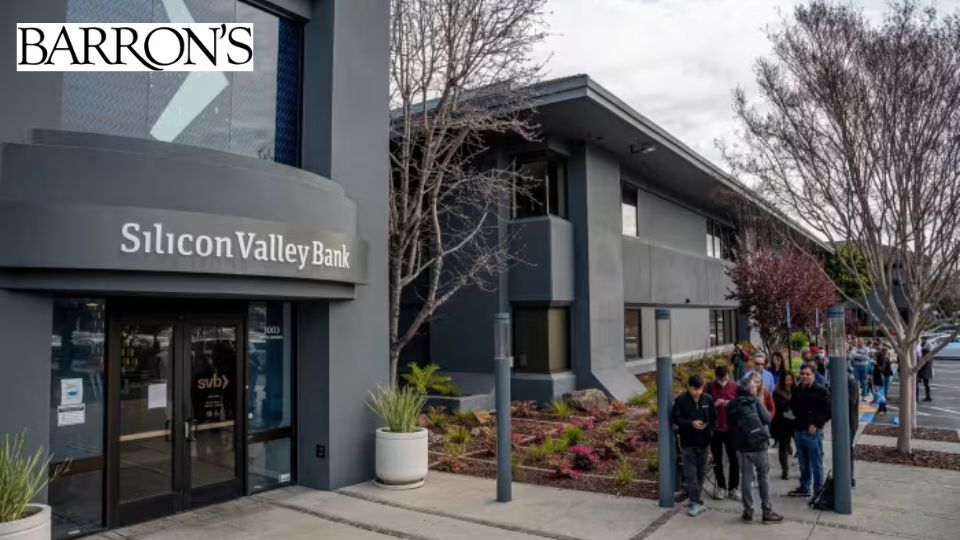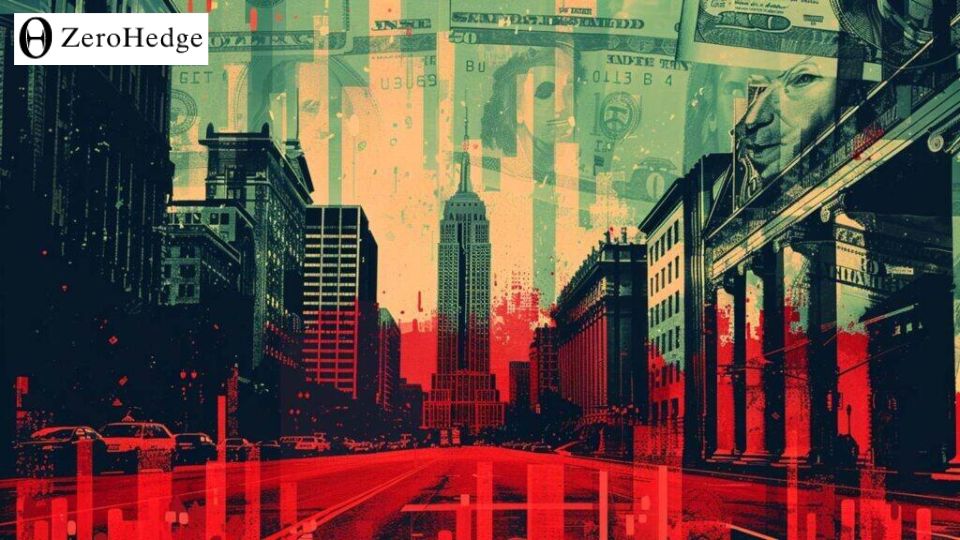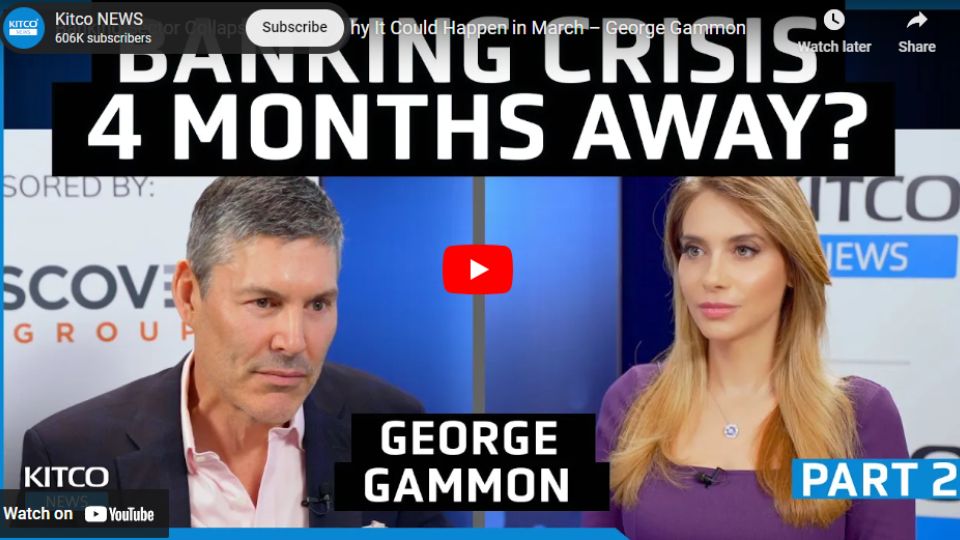
- Professors studied 2000 bank crises since the 13th century. Last year's matched those that were more severe than average - unfolding over 3 years.
- It’s premature to feel relief as we approach the first anniversary of Silicon Valley Bank’s collapse.
- Silicon Valley Bank’s bankruptcy in early March was the largest bank failure in the U.S. since the Great Depression and was closely followed by the collapse of Silvergate Bank and Signature Bank.
- New York Community Bancorp, which took over Signature Bank, is now in trouble itself. Its stock is now worth less than half of where it stood at the beginning of the year.
- There are many banks suffering from what caused the bank failures one year ago—higher interest rates.
- Stanford University finance professor Amit Seru last year calculated that the U.S. banking system is sitting on $2.2 trillion of unrealized losses because of higher interest rates.
- Yet another more obvious source of concern is that the pandemic-induced crash of the commercial real estate market hasn’t fully been reflected on bank balance sheets.
- The professors constructed a huge database containing details of banking crises since the 13th century in 138 countries—a total of nearly 2,000 crises in all. They specifically focused on the ways in which the regulators intervened to prop up banking systems—correlating the different kinds of interventions and their cost with whether a systemic banking crisis subsequently ensued.
- Schmelzing said that the particular combination of interventions that banking regulators pursued a year ago “most closely matches that of 57 prior crises that tended to be more severe than average.”
- Schmelzing stressed that a year isn’t long enough to know if a crisis has been averted. He said that “systemic crises tend to be drawn-out affairs” with “long tails.” In their study, he and Metrick focused on three-year horizons, which means that we have two more years to go before we can start to breathe easily.
It’s premature to feel relief as we approach the first anniversary of Silicon Valley Bank’s collapse.
The Pollyannas on Wall Street disagree, pointing out that the banking system has avoided the systemic crisis that seemed all too possible this time a year ago.
Silicon Valley Bank’s bankruptcy in early March was the largest bank failure in the U.S. since the Great Depression and was closely followed by the collapse of Silvergate Bank and Signature Bank. Switzerland’s Credit Suisse bank also failed in March 2023, igniting fears of the crisis spreading to other countries’ banking systems as well. Notwithstanding all these worries, the banking system has survived.
There are several reasons it would be premature to celebrate, however. Some are more obvious, even if an exuberant Wall Street is largely ignoring their potentially systemic consequences. One is that New York Community Bancorp, which took over Signature Bank, is now in trouble itself. Its stock is now worth less than half of where it stood at the beginning of the year.
Another is that there are many banks suffering from what caused the bank failures one year ago—higher interest rates. Stanford University finance professor Amit Seru last year calculated that the U.S. banking system is sitting on $2.2 trillion of unrealized losses because of higher interest rates. He arrived at this huge sum by comparing the book value of bank assets, which assumes loan portfolios are held to maturity, and those portfolios’ value, assuming they’re sold at their current value
At the time of his calculations, Seru found that 10% of banks had unrealized losses that are greater than Silicon Valley Bank had at the time of its collapse.
Yet another more obvious source of concern is that the pandemic-induced crash of the commercial real estate market hasn’t fully been reflected on bank balance sheets. That’s because of uncertainty about what various commercial properties are really worth. That’s changing, as more commercial real estate deals are occurring—at huge discounts of up to 50%, if not more. Banks will be squeezed even more as these discounts get reflected on their balance sheets.
Worrisome as all this, there’s even more to fret over below the surface. These less-obvious sources of concern trace to research conducted by Andrew Metrick, a Yale University economist, and Paul Schmelzing, a Boston College finance professor and a research fellow at Stanford’s Hoover Institution. Their study focuses on what the banking regulators are doing, as opposed to what they’re saying.
That’s a helpful focus because banking regulators are invariably upbeat, no matter how grave things might otherwise be. But if the regulators are behaving in ways that suggest they’re especially worried, then it behooves us to be worried too.
The professors constructed a huge database containing details of banking crises since the 13th century in 138 countries—a total of nearly 2,000 crises in all. They specifically focused on the ways in which the regulators intervened to prop up banking systems—correlating the different kinds of interventions and their cost with whether a systemic banking crisis subsequently ensued. In an interview, Schmelzing said that the particular combination of interventions that banking regulators pursued a year ago “most closely matches that of 57 prior crises that tended to be more severe than average.”
When reminded that a full-scale banking crisis hasn’t occurred over the past 12 months, Schmelzing stressed that a year isn’t long enough to know if a crisis has been averted. He said that “systemic crises tend to be drawn-out affairs” with “long tails.” In their study, he and Metrick focused on three-year horizons, which means that we have two more years to go before we can start to breathe easy.
Schmelzing said that a helpful guidepost is the timeline of the 2007-09 financial crisis. Banking regulators first intervened in August 2007, when BNP Paribas suspended redemptions from three of its mutual funds because of what it at the time said was the “complete evaporation of liquidity in certain market segments of the U.S. securitization market.” As we know now, of course, the collapse of Lehman Bros. and a full-scale panic in the banking system didn’t take place until 13 months later.
“We’re not out of the woods,” Schmelzing warns.
Story by Mark Hulbert - Redacted bullet points by Jody Davis https: //www.barrons.com/articles/banking-crisis-new-york-community-bancorp-81a3eb27


